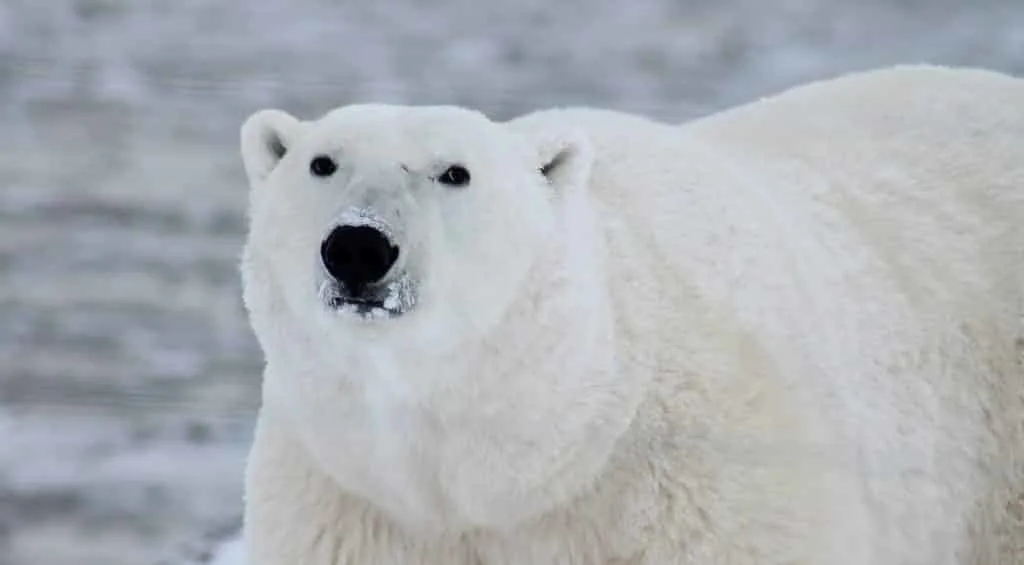Welcome to the Top 3 Places to See Polar Bears in the Wild.
Polar bears have a considerable cultural significance to the Inuit people of Northern Alaska, Canada, and Greenland, and even taught the Inuit community the art of seal hunting.
Many of the Polar bear’s attributes have been called upon by Inuit shamans (angakkut) who believe they can harness the spirit and power of the polar bear.
Key Points:
- Canada and Norway are popular locations to see Polar Bears in the wild. Canada hosts about 60% of the global Polar Bear population.
- Tours are offered in both countries, with options in Canada such as the spring Polar Bear and Iceberg safari, and in Norway, additional activities like Aurora Borealis viewing, snowmobiling, glacier hiking, and kayaking are available.
- The estimated Polar Bear population in Svalbard, Norway is approximately 3,500.
This power is thought in Inuit mythology to shape-shift between the physical body of the polar bear and a human. These are also attributes of the Brown Bear and Black Bear.
Top 3 Places to See Polar
| Rank | Location | Best Time to Visit | Key Attractions | Approx. Polar Bear Population | Tour Operators |
|---|---|---|---|---|---|
| #1 | Canada (Churchill) | Winter, Late summer | Seasonal, check with a tour operator | 60% of the world’s population is in Canada | – Natural World Safaris – Natural Habitat Adventures – Swoop Arctic Cruises – Churchill Wild |
| #2 | Norway (Svalbard) | Summer (June-August) | – Svalbard Archipelago – Aurora Borealis viewing – Snowmobiling – Glacier hiking – Kayaking | Approx. 3,500 in Svalbard | – 50 Degrees North Tours – National Geographic Expeditions – Visit Svalbard Tours |
| #3 | Alaska (Kaktovik and Utqiagvik) | – Polar bear viewing by cruise – Aurora Borealis viewing (weather dependent) – Visit the Inuit village of Kaktovik | – Polar bear viewing by cruise – Aurora Borealis viewing (weather dependent) – Visit Inuit village of Kaktovik | Limited numbers available for viewing | – Planet Earth Adventures – Alaska.Org – Northern Alaska Tour Company |
Careful management of ecotourism applies to the environmentally sensitive sea ice habitat of polar bears and tours reflect this in compliance when encountering the polar bear.
(Note that tours have to be booked quite some time beforehand, especially those sponsored by international conservation agencies have an 18-month waiting list! So it is very important to do lots of research.) Enjoy reading Top 3 Places to See Polar Bears.
1. Canada (Churchill)
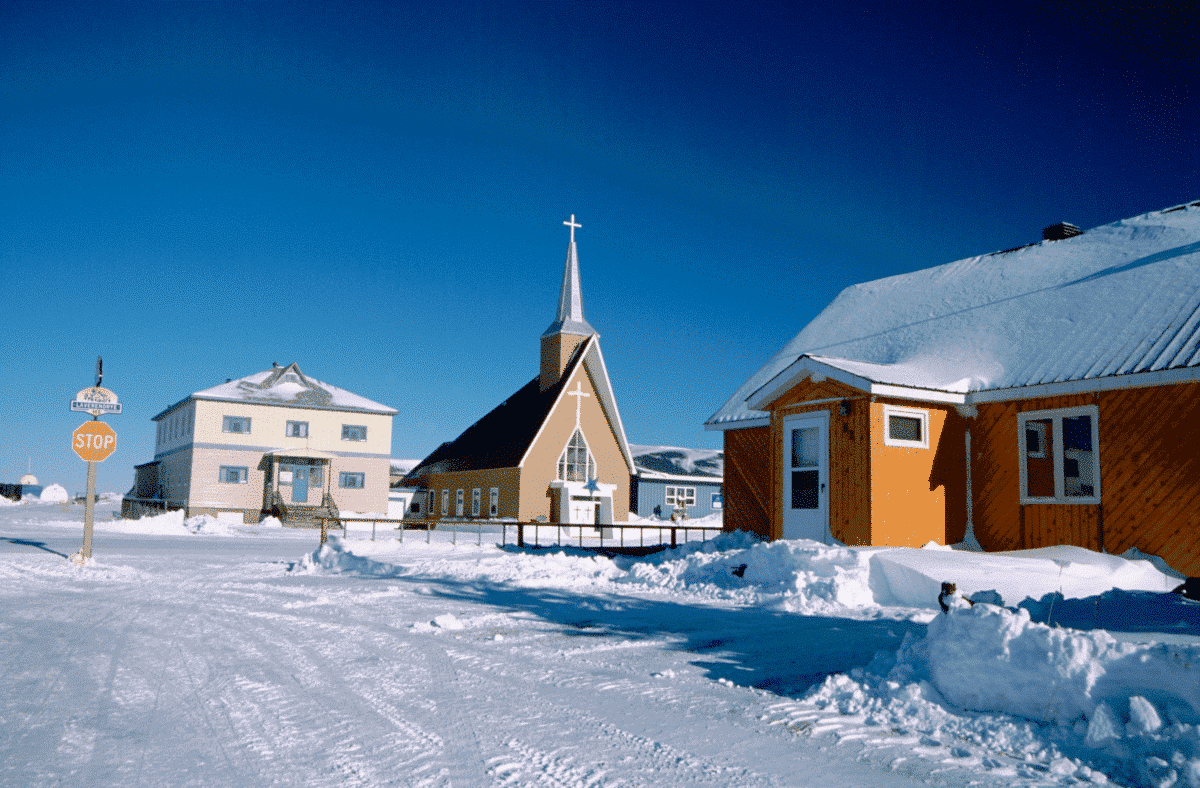
Roughly 60% of the Polar Bear population call Canada home, solidifying it as one of the top 3 places to see polar bears.
The winter months are the best time to see many bears, but it is also popular to tour in the late summer months to witness the polar bears roaming the wild coastline. During this time, wildflowers are in bloom, and an active array of animals is searching for food. During this time, you may see Beluga Whales, wolves, and caribou.
A spring Polar Bear and Iceberg safari allows you to explore the incredible beauty of the Arctic wilderness. 7-9 day tours that offer local guides facilitating the chance to get as close as possible to polar bears in their natural environment for an experience of a lifetime.
Terms may include fly-in safari, boat cruises, Hudson Bay bear migration drives, arctic cabin stay, and recreational activities.
Operators:
2. Norway (Svalbard)

One of the Northernmost areas to witness world wonders of glaciers,and of course the Polar Bears that grace the breathtaking setting.
The Svalbard Archipelago, situated in the Arctic Ocean north of mainland Norway, is one of the few places where you can see Polar Bears in the wild. The Svalbard area Polar Bear population has been steadily growing and the estimated population is approximately 3,500.
In addition to Polar Bear tours, visitors to Norway can experience; The Aurora Borealis/ ‘The Northern Lights’ (November to February) – Arctic cruise, Snowmobiling or dog-sledding, Glacier Hiking hike with jaw-dropping views of Norwegian fjords and mountains, and kayaking, and witnessing the astonishing wildlife. Svalbard offers many different types of activities to enjoy in addition to the polar bear tours.
The cruise takes place during a summer month period of 24-hour daylight. It is then guaranteed to see wildlife at any time. Temperatures at this time can range from 3-7 degrees Celsius ( June-August).
Norway has all of this and more to offer you.
Operators:
50 Degrees North Tours
National Geographic Expeditions
3. Alaska
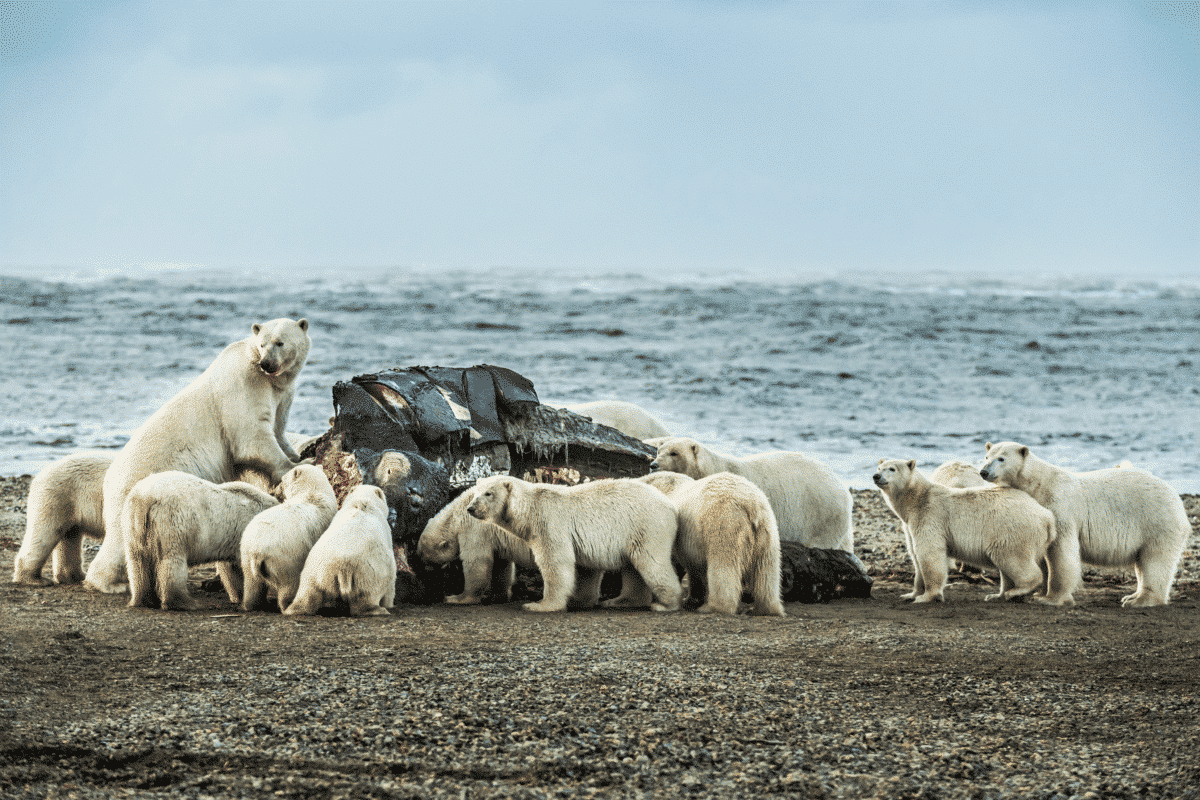
Two Alaskan communities, Kaktovik and Utqiagvik, offer limited opportunities for polar bear viewing. Popularly, trips to visit the Inuit village Of Kaktovik are offered for tourists to view the waters of the Beaufort Sea in the Arctic National Wildlife Refuge(ANWR).
This is the best place to view Polar Bears in Alaska and is generally conducted by cruise tour, where a safe and responsible distance is kept between visitors and the Polar Bear in its natural habitat. Included may be the opportunity to see the Aurora Borealis ( weather dependent).
Operators:
Visitors are initially drawn by the allure of Arctic wildlife, particularly the majestic Polar Bears. However, their journey unfolds into an immersive exploration of the local community, rich indigenous traditions, and the pressing environmental challenges shaping the area.
Encountering The Polar Bear:
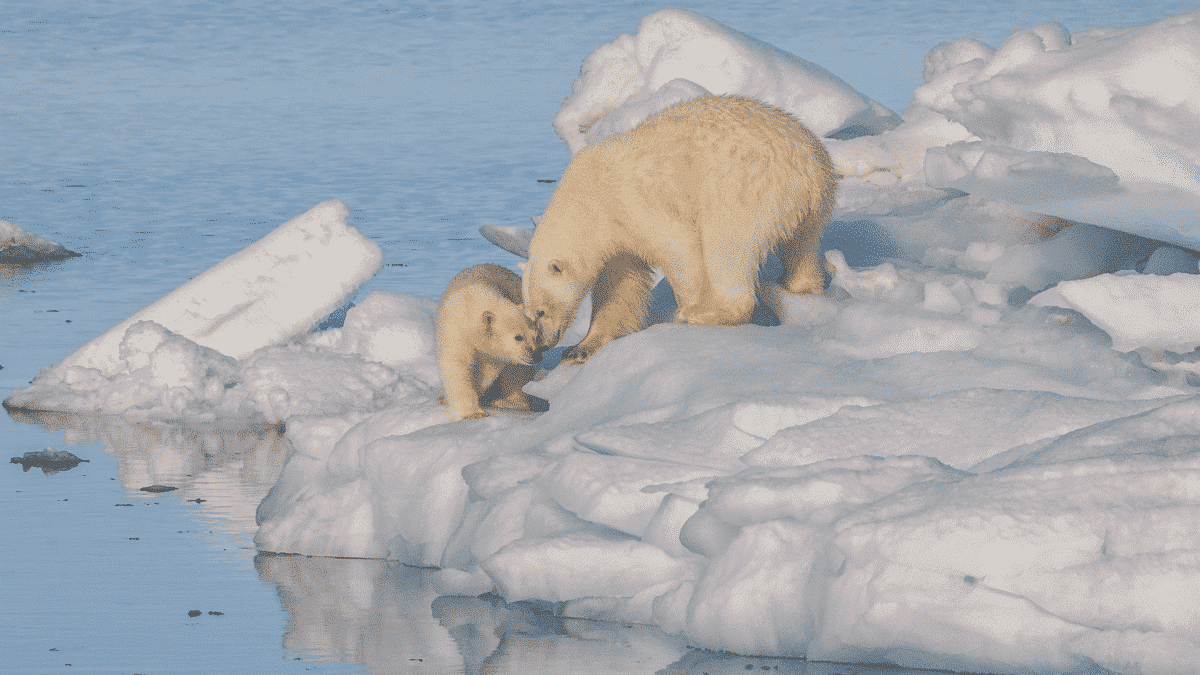
The best thing to remember when packing for your trip to the Arctic is layers! It may be a good idea to pack waterproof and thermal clothing that can keep you warm during the subzero temperature lows.
Important information to consider when booking tours:
Unfortunately, all encounters with Polar Bears are weather dependent, which may affect any itinerary. Due to unpredictable weather, transportation to remote wilderness is prevented, where most rural communities have limited commercial air service.
This might result in unforeseen extra costs or lengthened waiting periods; therefore, travel insurance is highly advised. It is also essential to consider that bear sightings are not guaranteed, for it is the wild Arctic. Many tours also require a minimum number of participants, so it is helpful to plan accordingly beforehand.
Relationship between polar bears and humans:

Due to the ever-changing and compromised sea ice habitat of the Polar Bears, interaction between human communities and Polar Bears has understandably increased. These changes have to be accommodated in a sustainable structure to protect livelihoods of both Polar Bears and humans.
Polar Bears have been an integral part of indigenous arctic culture for up to 150 000 years. Hunting of Polar Bears is still part of a subsistence and traditional Inuit lifestyle, however hunts are now strictly monitored to ensure populations that already face endangerment, are becoming stable or increasing in the future.
Conservation status per Country:
| Country | Conservation Status |
|---|---|
| International | Vulnerable |
| Canada | Special concern |
| Greenland & Denmark | Vulnerable |
| Norway | Vulnerable |
| United States | Threatened |
| Russia | Recovery |
Due to the rapid rate at which ice caps are melting, it is estimated that Polar Bear populations will struggle to find food. (The bears that come here are climate refugees, on land because the sea ice they rely on for hunting seals is receding.)
There may currently be about 23,000 polar bears worldwide, but without action on climate change, predictions of further decline in Polar Bear numbers by mid-century remain a forefront concern.
What can you do?
The polar bear’s dwindling habitat has become globally synonymous with the urgency of climate change. However, the practice of Polar Bear/ Arctic ecotourism is just as important… Adaptive management in places like Churchill, Manitoba works to ensure that recreational activities don’t harm Polar Bears and other Arctic wildlife. It is important to support conservation efforts where possible and to always comply with tour regulations when encountering wildlife.
Create awareness concerning Polar Bear’s threatened status by forming a connection through Polar Bears that have even been given personalized names. Follow their movements and allow this to inspire you to be actively involved in sustainable practices to lessen the overall rate of global warming affecting unique habitats of special wildlife.
When you adopt a Polar bear you will be helping to ensure that the Arctic food chain stays stable benefiting both the wildlife and people in and beyond the Arctic. Polar bear numbers may decrease by 30% by the year 2050 due to the speedy loss of sea ice. Any support towards managing the rate of sea ice loss will allow for the Polar Bear population to stabilize or be monitored and protected in larger-scale conservation and tracking efforts.
Become a WWF member:
Keep in touch with wildlife from around the world, where your donations play an important role in sustaining conservation efforts and you can play a part in funding world wildlife.
5 Fun Facts about Polar Bears
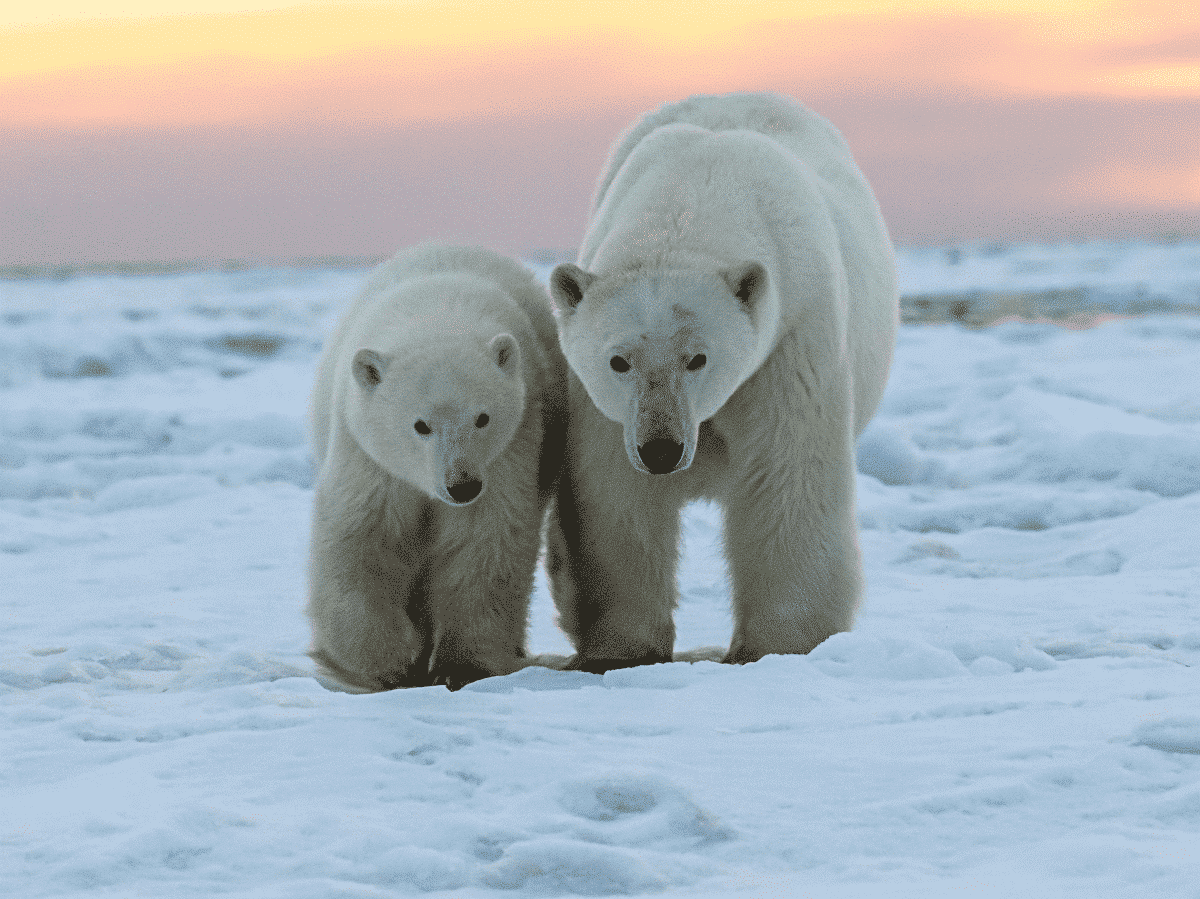
- Underneath their fur coats, Polar bears have black skin. Their coats are translucent but are seen as white due to the reflection of visible light in a tundra environment.
- Polar bears are exceptionally strong swimmers. They can swim for days at a time and speeds of up to 10 kilometers per hour.
- Polar bear DNA can be extracted from footprints in the snow, even containing, the details of their latest meal consumed. This was discovered using SPYGEN; a service/ research laboratory, specialized in monitoring terrestrial biodiversity DNA.
- Polar Bears are the largest land, carnivorous mammals on earth. Males weigh up to 800kg, twice the size of females, and measure 3 meters in length.
- Their heightened sense of smell allows them to detect prey from up to 10 kilometers away. This sense of smell can even penetrate beneath water or compact snow.
General facts

Learn about the majestic polar bear. Polar bears can be located across five Arctic countries; The United States ( Alaska), Canada ( Churchill), Russia, Greenland, and Norway ( Svalbard). Check out the post about the largest recorded Polar bear if you want a more in-depth experience!
They find home on land and in water. Vast and ever-changing sea ice makes up most of their extensive habitat range which is dependent on the quality of sea ice, and the subsequent availability of prey. Especially seals.
Habitat
In comparison to other carnivores of their size, polar bears do not have territories due to seasonal changes in their sea ice habitat. Their ever-changing habitat may directly impact their travel distances for food and how long they may have to fast while searching. Young polar bears may travel up to 1000 kilometers in search of a home without their mothers.
Diet
Polar bears’ diet, where possible consists of a high-fat content in both ringed and bearded seal fat, however, polar bears often have to scavenge for smaller prey.
Lifecycle
The Polar bear mating process takes place on sea ice but eggs may only implant in the fall season. For the mother to sustain herself and her cubs, she has to have a high-fat percentage throughout a long and challenging ‘ denning season.’ Adult males will accompany the female for a number of days before leaving into a solitary lifestyle.
Behavior
Polar bears communicate through body highly developed language, vocalizations, and scent markings.
To sharpen your expertise on bears, read this post to learn about bear poop or uncover all about bear teeth here.
Summary of Top 3 Places to See Polar Bears

Canada (Churchill) is the top destination to see polar bears, with approximately 60% of the world’s polar bear population calling Canada home. Winter months offer the best chance to observe a large number of bears, while late summer showcases polar bears along the wild coastline amidst blooming wildflowers and diverse wildlife.
Tour programs, like the spring Polar Bear and Iceberg safari, provide opportunities to explore the Arctic wilderness and get up close to polar bears in their natural habitat. Local guides and operators, such as Natural World Safaris, Natural Habitat Adventures, Swoop Arctic Cruises, and Churchill Wild, offer unforgettable experiences for wildlife enthusiasts.
Thank you for reading Top 3 Places to See Polar Bears!
Frequently Asked Questions about Polar Bears
Q: What is the size of a polar bear?
A: Adult male polar bears are usually larger than females. On average, adult males weigh between 900 to 1,600 pounds (400 to 700 kilograms) and measure around 8 to 10 feet (2.4 to 3 meters) in length. Adult females are slightly smaller, weighing between 550 to 1,100 pounds (250 to 500 kilograms) and measuring around 6 to 8 feet (1.8 to 2.4 meters) in length.
Read more about the largest polar bear on record!
Q: What do polar bears eat?
A: Polar bears are carnivorous and mainly feed on seals, particularly ringed seals and bearded seals. They are opportunistic hunters and will also scavenge on whale carcasses or other available sources of food. They have a thick layer of blubber and fur to keep them insulated in the cold Arctic waters.
Q: Are polar bears endangered? A: Yes, polar bears are classified as a vulnerable species by the International Union for Conservation of Nature (IUCN). They are facing significant threats due to climate change, which is causing the loss of sea ice habitats essential for hunting and survival. Other factors, such as pollution, oil exploration, and conflicts with humans, also pose risks to their population.
Q: Do polar bears hibernate? A: Polar bears do not hibernate in the same way as some other bear species. Instead, they enter a state called “walking hibernation” or “carnivore lethargy.” During this period, they may reduce their activity, but they can still be active and hunt throughout the winter months.
- 10 Most Endangered Animals - April 15, 2024
- Top 10 Cutest Fish in the World - April 15, 2024
- 16 Top Predators in the Food Chain - April 12, 2024

